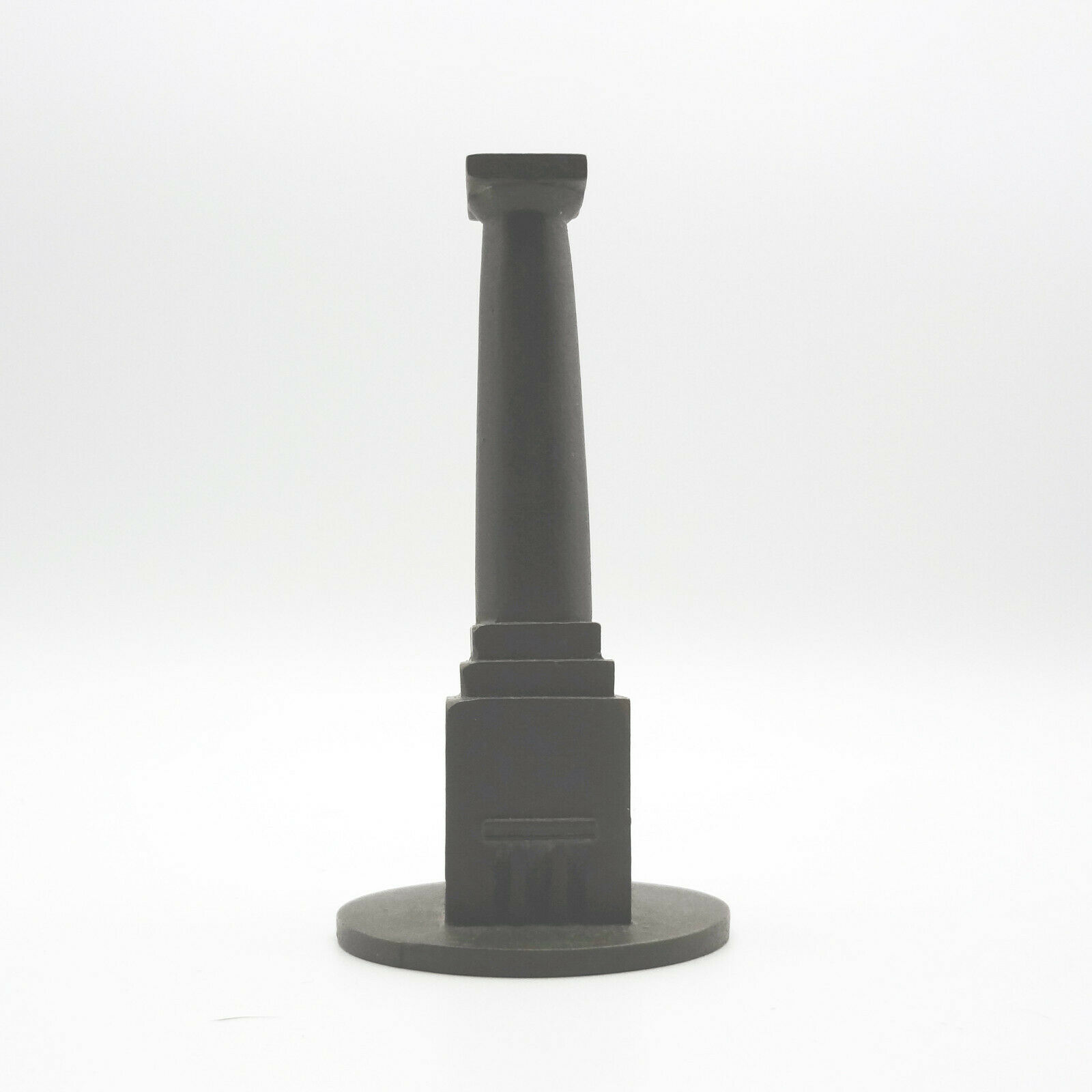-40%
BOYM Chicago Tribune Tower "Missing Monuments" Series
$ 253.43
- Description
- Size Guide
Description
Constantin and Laurene Leon Boym created their replica series, “Missing Monuments,” as a tribute to structures which don’t exist. ”These structures may have been destroyed earlier, or they may have never even been built, as with visionary architecture that often exerts a profound cultural influence. When a souvenir’s referent no longer exists, a small replica assumes a new and different meaning. The object becomes an indispensable thing, the only material manifestation left of a memory or idea.” Produced in 1996, the Missing Monuments miniatures were cast of bonded bronze, hand-finished and numbered. (Label is printed on clear adhesive and doesn't show up very well -- enlarge photo for detail.)Dimensions:
Height 4-3/4”
Base diameter 2-3/8”
Ships Priority Mail
The Tribune Tower ... is more than a Chicago icon. The story of its origin has proved to be one of the most enduringly influential narratives in 20th Century architecture, key to understanding the skylines of cities all over the world.
A groundbreaking skyscraper was the highest ambition of Colonel Robert R. McCormick, the powerful publisher of the Chicago Tribune and a man who dominated local politics before the First World War. Hoping to project an aura of international prestige for his burgeoning media empire, the competition brief he compiled asked architects to create “the most beautiful office building in the world.”
More than 260 architects from 23 countries responded with designs in a dizzying range of styles.…(T)he Tribune Tower competition was unique for its global influence on the future of the field. Audiences could compare and evaluate starkly contrasting ideas from the world’s foremost architects at a glance; the results—published widely—produced a ripple effect which influenced different schools of thought competing to define the look of the “Modern Age”.
Not only did echoes of the design of the winning skyscraper appear throughout the pre-war period, but several other entries resonated with later generations….
A tongue-in-cheek proposal by Austrian architect Adolf Loos to turn the building into an enormous Doric column, playing on the “columns” that compose a newspaper, went went on to inspire Postmodernist architects with its readymade look and its playful engagement with language.
Leo Shaw, October 3, 2017, blog of the Chicago Architecture Biennial














